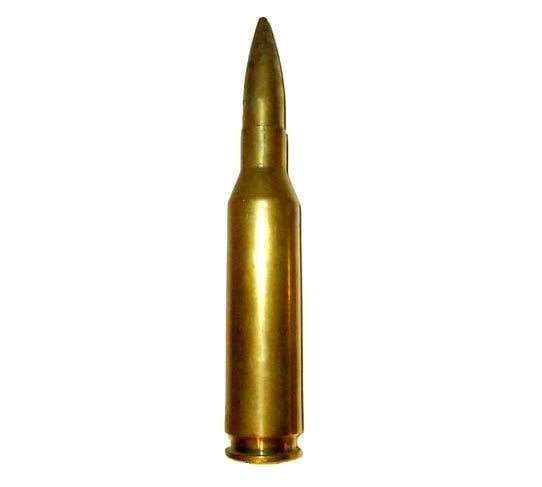Place of origin Soviet Union Designed 1939 | In service 1941–present | |
 | ||
Type Anti-tank rifle, Heavy machine gun Used by Soviet Union and successor states Wars WWII, Soviet war in Afghanistan, War on Terror, 2011 Libyan civil war, and many other conflicts | ||
The 14.5×114mm (.57 Cal) is a heavy machine gun and anti-materiel rifle cartridge used by the Soviet Union, the former Warsaw Pact, modern Russia, and other countries.
Contents
It was originally developed for the PTRS and PTRD anti-tank rifles, but was later used as the basis for the KPV heavy machine gun that formed the basis of the ZPU series anti-aircraft guns that is also the main armament of the BTR series of armoured personnel carriers from the BTR-60 to the BTR-80.
Cartridge dimensions
The 14.5×114mm has 42.53 ml (655 grains H2O) cartridge case capacity. The exterior shape of the case was designed to promote reliable case feeding and extraction in bolt action rifles and machine guns alike, under extreme conditions.
14.5×114mm maximum cartridge dimensions. All dimensions in millimeters (mm).
Americans would define the shoulder angle at alpha/2 ≈ 22.50 degrees. The common rifling twist rate for this cartridge is 455 mm (1 in 17.91 in), 8 grooves, Ø lands = 14.50 mm, Ø grooves = 14.95 mm.
According to the official guidelines the 14.5×114 case can handle up to 360 MPa (52,213 psi) piezo pressure. In C.I.P. regulated countries every rifle cartridge combo has to be proofed at 125% of this maximum C.I.P. pressure to certify for sale to consumers.
Ammunition types
Cartridges use lacquered steel cases and a percussion primer. Some countries also use brass cartridge cases. The propellant consists of 28.8 g smokeless powder with seven tubes, designated as 5/7NA powder. Two different versions of bullet series are known, the earlier had a conventional bullet jacket with boat-tail. These had a long engraving portion that caused considerable barrel wear. The newer bullet types have a smaller engraving portion with a rounder boat-tail and were used from about 1957 on.
14.5×114mm ammunition has been manufactured in Bulgaria, China, Egypt, Hungary, Iraq, North Korea, Poland, Romania, Russia, and the former Czechoslovakia. Of special note are the new Chinese armor-piercing types:
Chambered weapons
Anti-materiel rifles
Machine guns
Other
